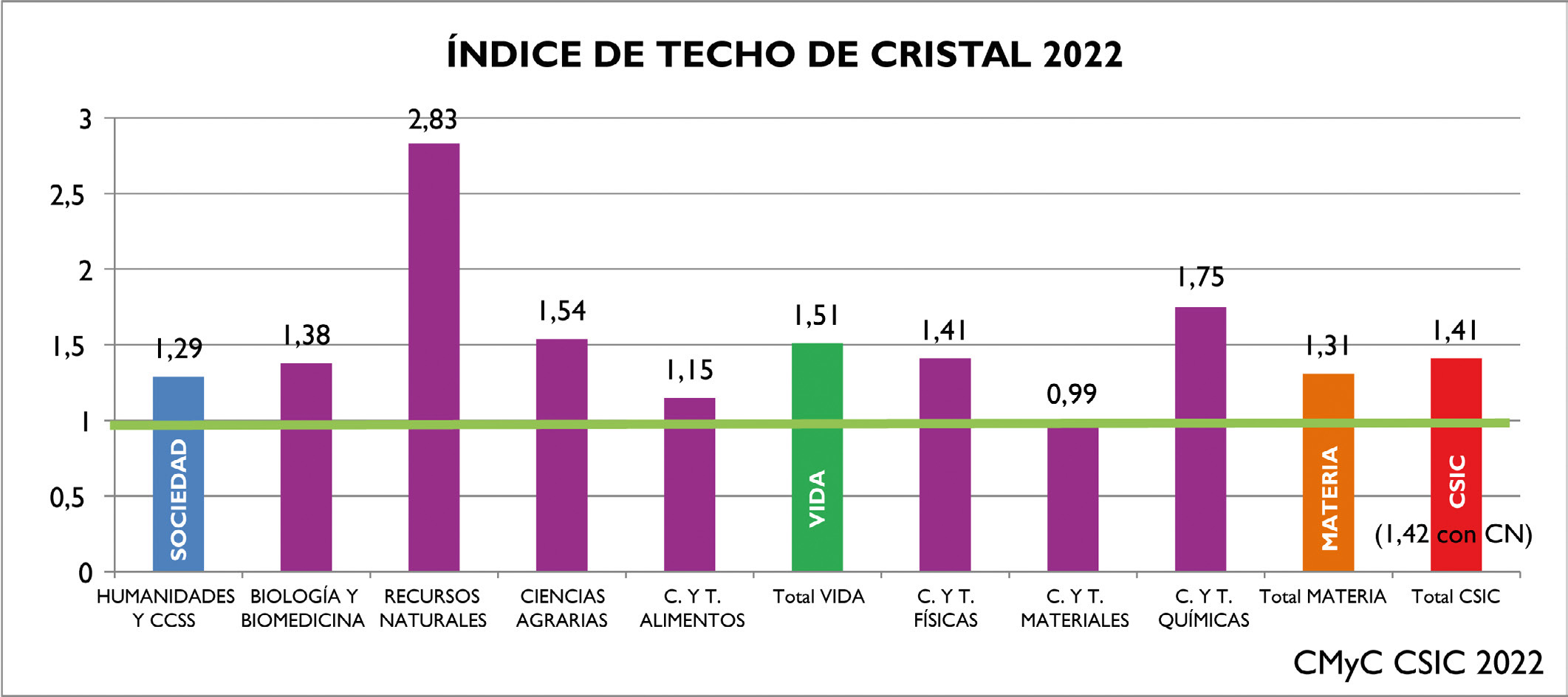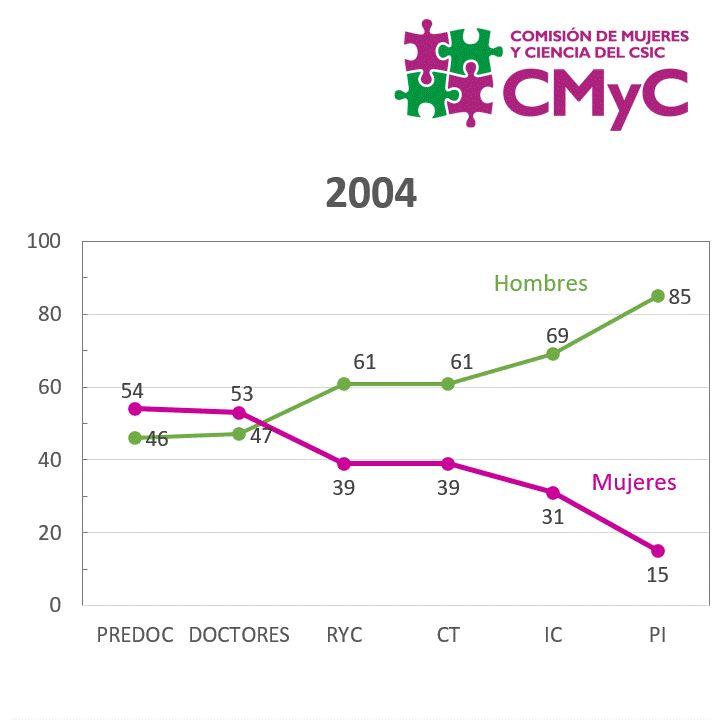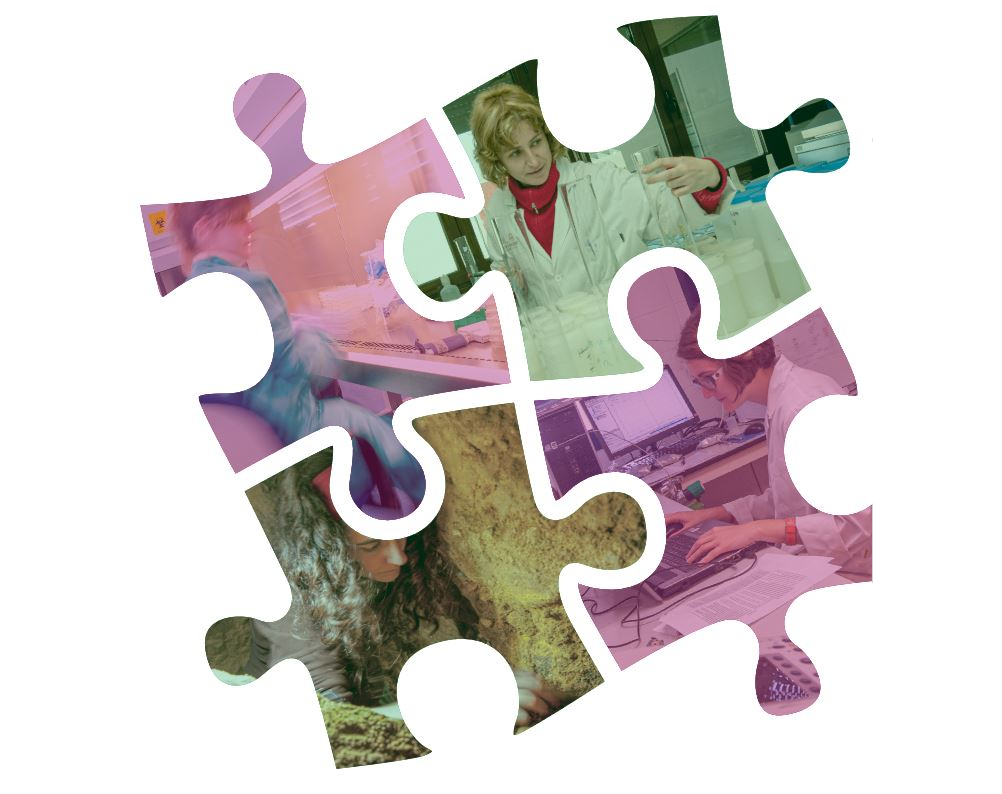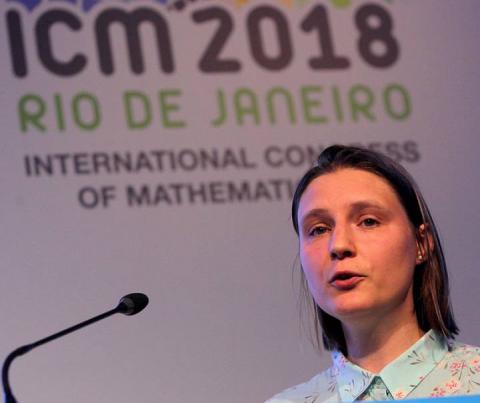The report Women Researchers 2022 has been prepared by the Women and Science Commission (CMyC) of the CSIC and presents the situation of women researchers in the CSIC on 31 December 2021. These reports, which have been produced by the CMyC since 2001, follow the recommendations of the European Commission to its Member States within the European Research Area.
One of the main conclusions of the Women Researchers 2022 is that there is still an under-representation of women researchers in the CSIC.
Society is the area closest to gender balance
In some sub-areas such as Physical Sciences and Technologies and Natural Resources, under-representation is chronic. In 2001 the percentage of women researchers in the CSIC was 30.9% and 20 years later this percentage stands at 37.5%. In other words, after two decades the gender balance (40/60) has not been reached. Looking at the three global areas in which the CSIC is structured (Society, Life and Matter), the report shows that Society is the area closest to gender balance, with 39.8 % of women researchers, while in Life and Matter the balance is further away, with 37.1 % and 35.0 % of women researchers, respectively.
The glass ceiling
The Glass Ceiling Index (ITC) in the CSIC in 2021 was 1.42. This CCI shows the difficulty of promotion of women researchers from the rank of Full Scientist to Research Professor, which would be 1 if there were no difficulty in such promotion.

It should be positively noted that the CSIC's JTI is lower than that of Spanish universities (1.70), as reflected in the report Científicas en Cifras 2021 (produced by the Ministry of Science and Innovation) and the average index for EU universities and research centres (1.60), as reflected in the report SHE FIGURES 2021 (produced by the European Commission, Directorate-General for Research and Innovation).
Scissor graphic becomes a clamp
Another piece of bad news is that since 2017 we have been observing how the typical scissor graph of the evolution of the research career (from pre-doctoral contract holders to Research Professors) of women and men in the CSIC is changing its characteristic shape towards a pincer due to the gradual decrease in the percentage of female pre-doctoral contract holders. In 2021, this pincer graph appears to be consolidated.

Positive: management team and innovation
However, the Women Researchers 2022 report also shows positive aspects related to gender, which we would like to highlight. For example, the CSIC management team (including the presidency, advisory memberships, vice-presidencies and general and assistant secretaries) has a significant presence of women, with more than 50%.
Very important are the data showing the scientific and innovation or technology transfer leadership of women researchers at the CSIC, despite their lower representation. More than 37% of the national projects in force in 2021 at the CSIC are led by women researchers, with a significant economic return. At European level, this leadership translates into 33.1% of projects led by women researchers, with a very significant contribution by women in international cooperation projects.
More than 37% of the national projects in force at the CSIC in 2021 are led by female researchers, with a significant economic return
From the point of view of innovation and technology transfer, the report shows an increase, with respect to previous years, in the participation of women as inventors of priority patents, as it is above 40%, a higher percentage than the total number of women in the CSIC research staff.
In short, Women Researchers 2022 shows lights and shadows. The lights because the presence of women in decision-making positions at the CSIC has increased - the fact that there are women in the presidency of the CSIC has contributed very positively to this - and because women researchers exercise an important and undeniable scientific and innovative leadership role. Among the shadows are the persistent under-representation of women researchers and the difficulty in achieving gender balance at all levels of science, especially among research professors. Much progress has been made in equality at the CSIC in recent decades, but there is still work to be done to achieve full equality.
The CSIC has been and continues to be a pioneer in Spain in terms of equality policies in science, in line with European priorities and recommendations on gender equality in research, as demonstrated, among other things, by the creation 20 years ago of the Commission for Women and Science (CMyC), which has been and continues to be a driving force for equality at the institution.




